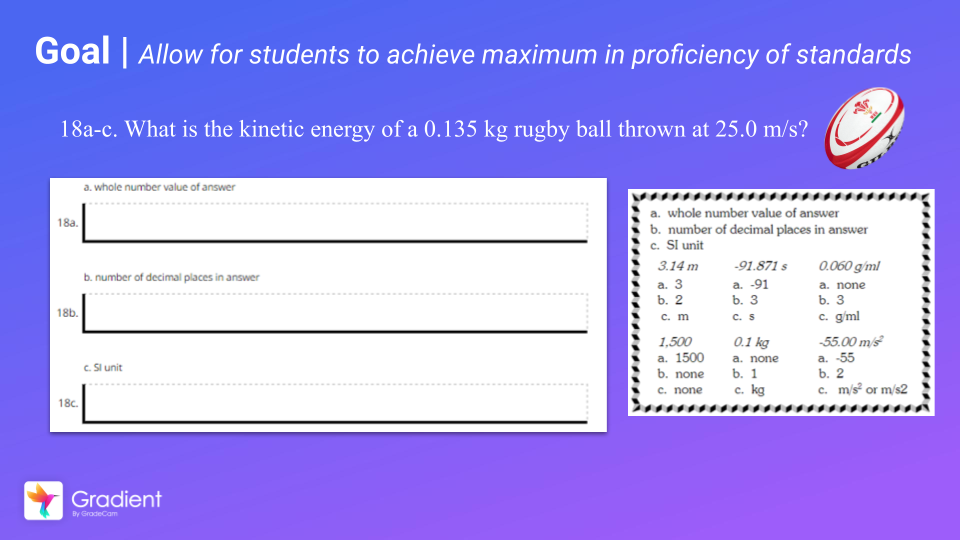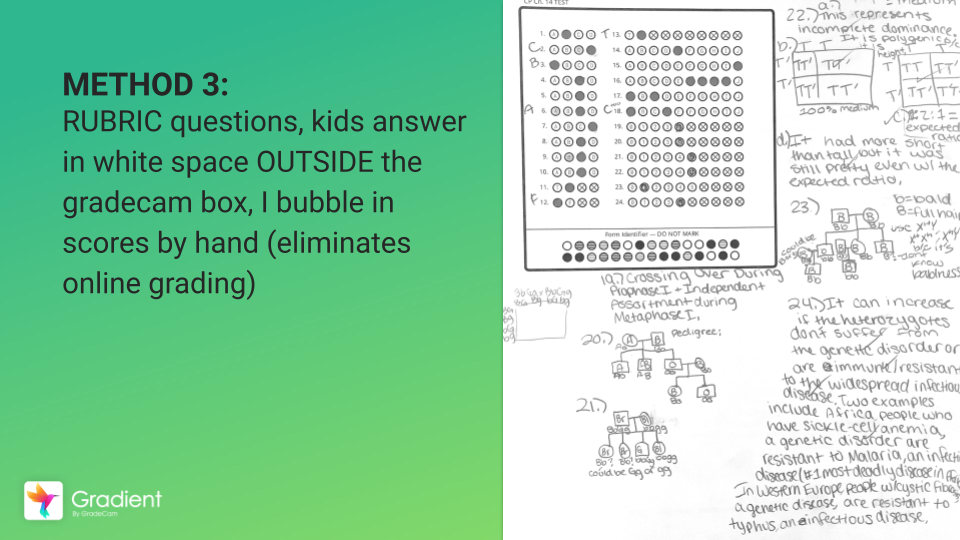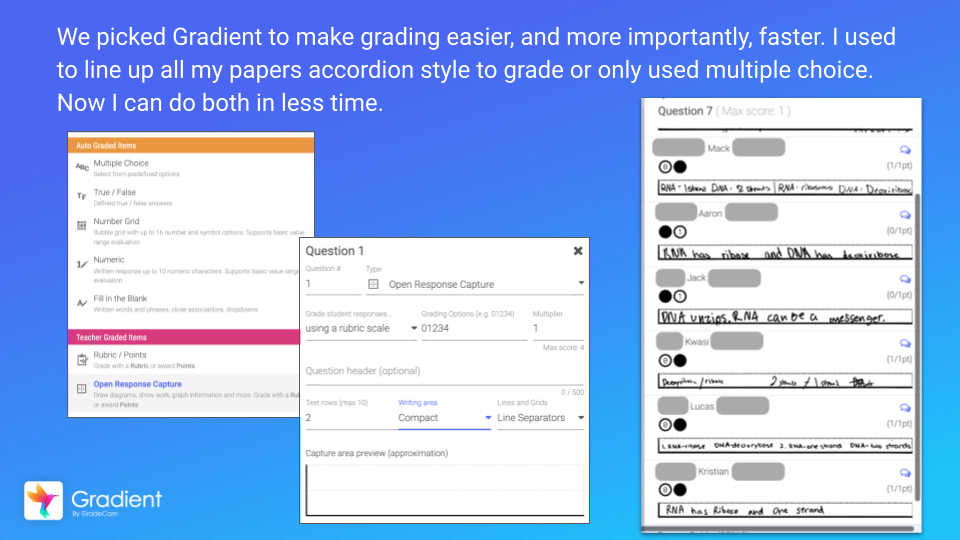Teach It Forward: Think Outside of the Bubble


Three educators were excited to share how they take their assignments beyond multiple choice by expanding the types of student responses they collect. In their Teach It Forward webinars, they share their strategies and tips for getting the most out of Gradient’s varied question types.
Emma “Super” Smith – Physics – Ridgeline High School, UT
When Ridgeline High began exploring solutions for their Grading for Learning initiative, Emma “Super” Smith started using Gradient to help her students better target their learning areas of need. After the start of the pandemic in Spring 2020, teachers at her school further expanded their Gradient usage to include the Student Portal and the additional available question types.
By incorporating Open Response with Capture question types in her assignments, her students are given an opportunity to approach problems in a different manner. In particular, students can draw or graph a solution to a problem.

Emma’s approach to dividing up the answer into parts is also a great tip. Having students respond to different parts of an answer can be helpful in determining specific areas or skills that they need to work on. She really likes how the reports can then help her with targeting a common area that may require additional support.
“We just cannot say enough about Gradient at our school.” - Super Smith
Luke Sandro – Biology – Springboro High School, OH
Luke’s school was seeking a quick and easy grading solution when he discovered Gradient. Over the years, he has expanded his usage to include Fill-In-The-Blank and Open Response with Capture for essays. Rather than using one set method, he incorporates a variety of approaches when creating student assignments. They all save him time, as well as provide him with great feedback for his teaching and his students’ learning.

One of Luke’s scoring methods for when he knows an extended response will be required is to use the Rubric question type and have the students write or draw on the paper outside the scan form. He then fills in the score to scan the grades. This is a fantastic way to collect extended responses while expediting the scoring and grade transfer.
“[Gradient] has saved me tons of time, and everybody at my school definitely appreciates it.” - Luke
Paul Fleisch – Biology – Marquette University High School, WI
Paul, along with other teachers at his school, began a trial of Gradient back in 2013. He quickly became a cheerleader for the program because of its ability to speed up so much of the process – from collecting free responses to transferring grades into the gradebook.
His advice for setting up the open response is to plan out what is needed ahead of time, like how big of an area to provide and whether lines or grids might support the student based on the kind of answer they will be providing. Due to the flexibility of the different questions and options, it is important to keep in mind the purpose for collecting a particular response.

Paul likes to use the By Question function to be able to view all the responses for one question for efficient grading and easily provide feedback with the student’s response.
“Gradient offers flexibility in the types of questions I am asking. It offers efficiency and I can grade quickly… which gives me time to engage with the students.” - Paul
To learn from other Gradient educators in action, check out our Teach It Forward series, view on-demand sessions, or register for upcoming webinar.




